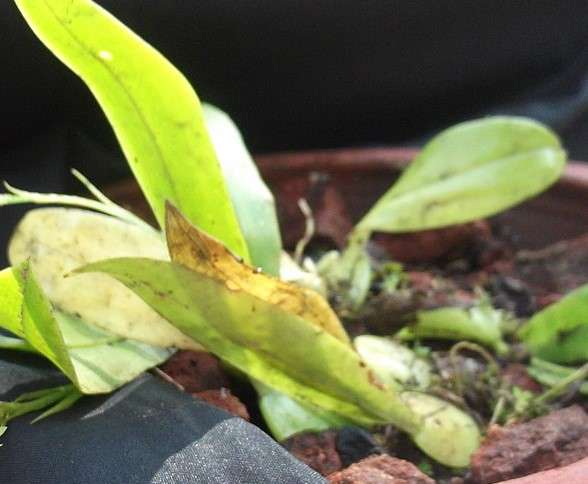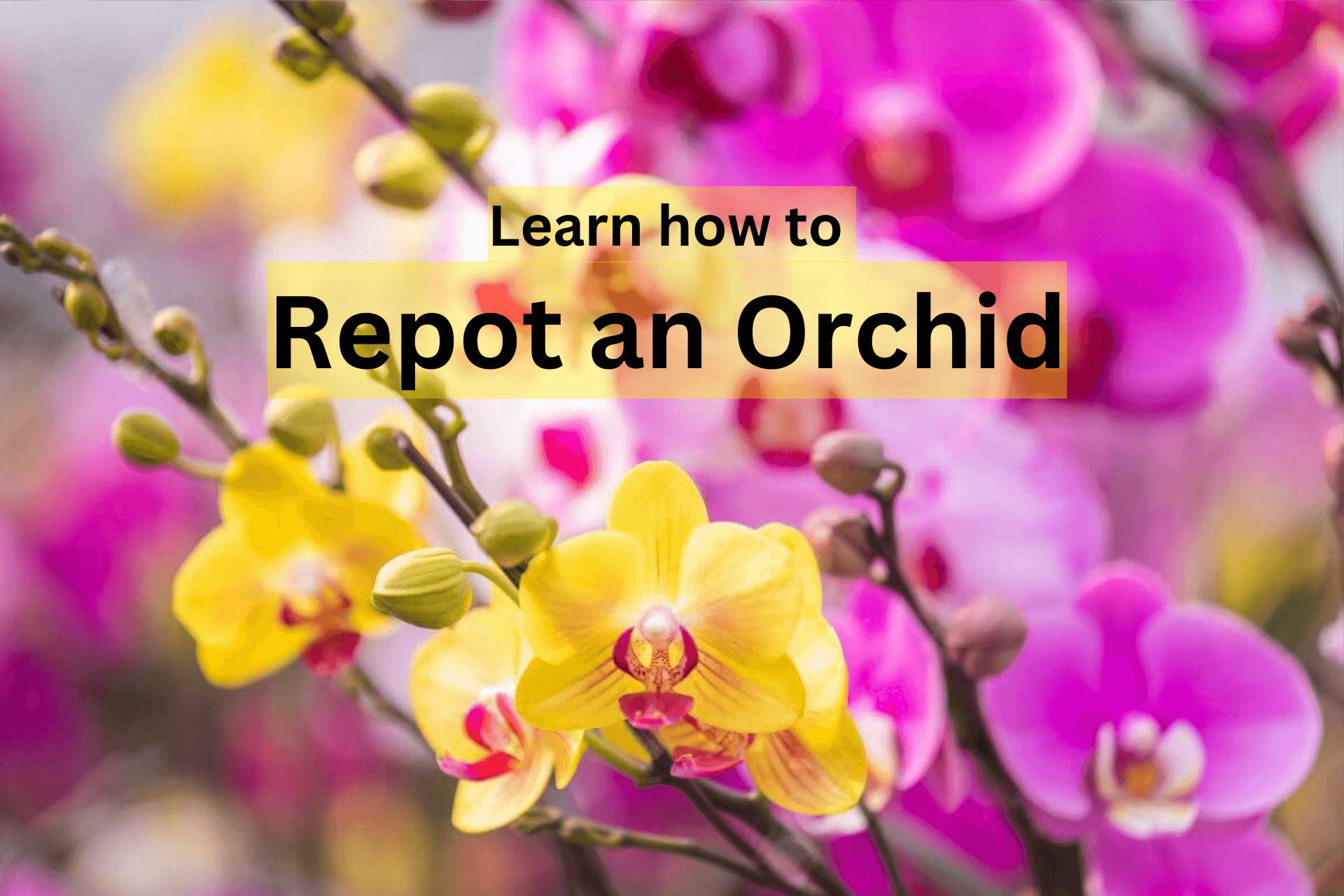This post may contain affiliate links. As an Amazon Associate we earn from qualifying purchases.
What to do if your orchid leaves turn yellow
Like most plants, when an orchid (plants in the Orchidaceae family) produces new leaves, older ones naturally turn yellow before dying back. When newer leaves turn yellow, it’s important to re-evaluate how you care for the plant and then check it for some common orchid diseases.
While almost all of the symptoms of these include some sort of yellowing of the leaves, only a few turn leaves completely yellow.
Ensure that the orchid is getting sufficient, but not too much light
Most of the more than 25,000 species of orchids grow in tropical forests, shaded by the canopy. Although some species thrive in bright sunlight, others will experience yellow leaves with too much. These will eventually drop off the plant.
To avoid the problem in the future, provide the orchid with indirect sunlight by setting it on the sill of an east-facing window or within 2 feet of a south-facing window. If you know that your particular orchid species requires medium sunlight, place it on the sill of a west-facing window or within 1 foot of a window that receives southern exposure.

Some orchids require specific temperature ranges
Orchids are hardy outdoors in U.S. Department of Agriculture plant hardiness zones 2 through 11, depending on species (find your growing zone here). Outside of the tropics, most are grown indoors, however, where they do fine with typical indoor temperatures.
Some orchids, such as Phalaenopsis (Phalaenopsis spp.), hardy to U.S. Department of Agriculture plant hardiness zones 10 through 12, are sensitive to temperatures cooler than 60 degrees Fahrenheit. The leaves will turn yellow when the plant is chilly and, again, these leaves will naturally fall from the plant. Adjust the temperature until you find one that suits the orchid best, between 60 and 80 degrees during the daytime and 50 to 55 degrees at night.
Hopefully, your orchid doesn’t have bacterial rot
Bacterial soft and brown rot are orchid diseases that cause the orchid leaves to turn yellow before they darken to black. Treat the infection by removing affected parts of the plant with sterile tools and then spraying the orchid until it is wet with a broad-range virucide, bactericide and fungicide, such as Physan 20. Use 2 teaspoons in 1 gallon of water.
Repeat the spray once a month to prevent further occurrences. Keeping the foliage dry and increasing air circulation around the orchid helps prevent this infection.
Fusarium wilt makes orchid leaves turn yellow
This disease can be distinguished from other orchid diseases by the wrinkled or shriveled appearance of the yellow leaves. Since it is typically caused by poor sanitation, prevention involves sterilizing cutting equipment before using it on the plant.
A 5-minute soak in solution containing 1 part household bleach and 3 parts of water should do the trick. Dip the tools before each cut made to the orchid.

Southern blight also makes orchid leaves turn yellow
If the lower part of the orchid’s stems turn yellow as well as leaves, suspect southern blight, a fungal infection. Treat southern blight with a systemic fungicide containing thiophanate methyl.
Mix one-half teaspoon of the fungicide in one gallon of water and pour it over the soil. Reapply the fungicide in four weeks. Prevent southern blight on your orchids by providing increased air circulation and proper sanitation.
Learn more about how to care for orchids
Mention of a fertilizer or pesticide, or use of a pesticide or fertilizer label, is for educational purposes only. Always follow the product’s label directions attached to the container you are using. Be sure that the plant you wish to treat is listed on the label of the pesticide you intend to use. Wear all recommended safety equipment.



